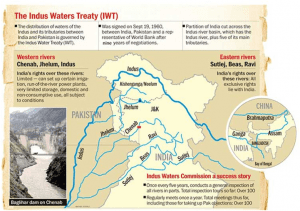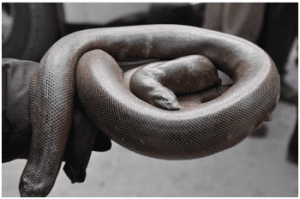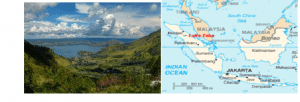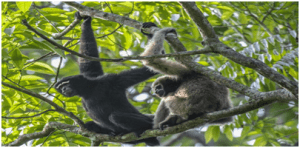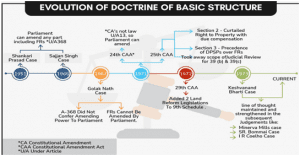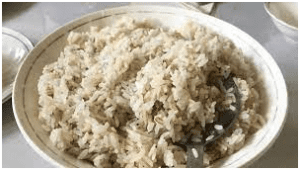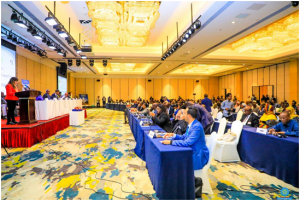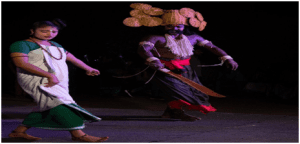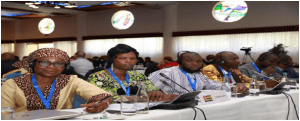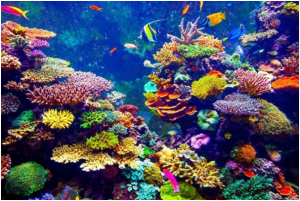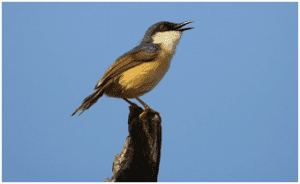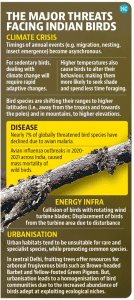1. ECOWAS AND COUP IN NIGER
TAG: GS 2: INTERNATIONAL RELATIONS
THE CONTEXT: Recently, in a coup in Niger, soldiers in the West African nation of Niger installed Gen. Abdourahmane Tchiani as head of state after ousting President Mohamed Bazoum. Apart from the international players, such as Russia and the United States, the regional bloc ECOWAS or the Economic Community of West African States has been playing an active role
EXPLANATION:
- ECOWAS heads of state decided to discuss their next steps after Niger’s military junta defied their August 6 deadline to reinstate the country’s ousted president, and the soldiers closed the country’s airspace.
- There is also apprehension that ECOWAS may choose to intervene militarily.
- Along with the difficult economic conditions already prevailing in the country, what has added to the concern for some in the West are the Nigerien calls for assistance from Russia’s Wagner Group.
COUP IN NIGER
- At an emergency meeting in Abuja, Nigeria, on 30 July, the ECOWAS demanded the “immediate release and reinstatement” of Niger’s elected president, Mohamed Bazoum. He had been held by the military since 19 July.
- The regional bloc gave the military in Niger a one-week ultimatum to comply and warned it would take all measures necessary, including force to restore constitutional order.
- On 28 July, the head of Niger’s presidential guard, General Abdourahamane Tchiani, declared himself head of state after the military seized power.
- Beyond warning against any regional and foreign interventions, the military leaders in Niger have given no indications of ways forward.
- This coup d’etat will have a significant impact on peace and stability in Niger and the entire Sahel region.
- The current coup plotters have blamed rising insecurity and a lack of economic growth. They stated that the intervention was necessary to avoid “the gradual and inevitable demise” of the country.
- There are other issues that precipitated the latest coup d’etat. These are ethnicity, the presence of foreign forces, and the weakness of regional bodies.
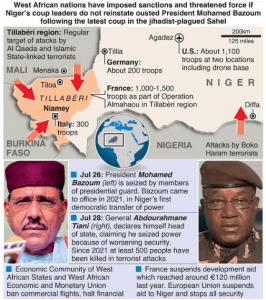
Factors that led to the coup
- There are no doubt that the rise in insecurity and declining economic prospects contributed to fragility in the country.
- Despite the increase in foreign forces, especially from the US and France, and military bases in Niger, the leadership has been unable to stop insurgent attacks.
- There are several insurgent groups, such as Al-Qaeda and Islamic State affiliates, as well as Boko Haram operating in the country.
- These attacks have resulted in thousands of deaths and displacements in the last decade.
- Hundreds of youths in the capital, Niamey, gathered to celebrate the July coup, waving Russian flags and chanting “Wagner”.
- The debate over the ethnicity and legitimacy of Bazoum was an issue during the last election campaign. Bazoum is from Niger’s ethnic Arab minority and has always been labelled as having foreign origins.
- This did not sit well within the military circle, which is predominantly composed of the larger ethnic groups, even though Bazoum got about 56% of the vote and is from the same party as former president Mahamadou Issoufou.
- The large number of foreign military troops and bases in the country has not been well received by the military. They believe this undermines them.
- Niger is a key ally of Western countries in the fight against insurgency in the region. France’s huge investments in Niger’s mining sector are another reason for its interest in security.
- Failure of regional organisations such as ECOWAS and the African Union to take a firm stance against military power seizures in Guinea, Burkina Faso and Mali emboldened the Nigerien military.
What is the Economic Community of West African States (ECOWAS)?
- It is also known as CEDEAO in French; the regional group was established in 1975 through the Lagos Treaty with a mandate of promoting economic integration among its members.
- ECOWAS now has 15 members: Benin, Burkina Faso, Cape Verde, Cote d’ Ivoire, Gambia, Ghana, Guinea, Guinea Bissau, Liberia, Mali, Niger, Nigeria, Sierra Leone, Senegal and Togo.
- Although, following coups in recent years in some of the biggest countries in the bloc, namely Mali, Guinea and Burkina Faso, it suspended the three members and refused to recognise their new governments.
- ECOWAS’ larger aims are to have a single common currency and create a single, large trading bloc in areas of industry, transport, telecommunications, energy, financial issues, and social and cultural matters.
- According to its website, the vision of ECOWAS is the creation of a “borderless region” that is well-integrated.
- ECOWAS is meant to be a region governed in accordance with the principles of democracy, rule of law and good governance, but it has also intervened militarily in the region in the past.
- At the helm of its organisation structure is the Chairman of the Authority of Heads of State and Government.
- The Chairman is the current Head of State and Government and is appointed by other Heads of State and Government to oversee its affairs for one year.
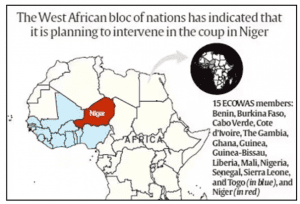
What kind of a role has ECOWAS played in the region so far?
- Beyond the goals of economic cooperation, ECOWAS has attempted to quell military conflicts in the region.
- ECOWAS also operated a regional peacekeeping operation known as ECOMOG, led by Nigeria in the 1990s and early 2000s, like in Liberia when forces were first deployed in 1990 and in Sierra Leone in 1997.
- In 2017, it intervened in the Gambia after longtime President Yahya Jammeh refused to step down after losing the elections, which eventually led to the winner Adama Burrow coming to power. It has sent its troops to other countries but never to Niger.
- The ongoing Niger coup’s leader, Gen. Tchiani, has previously served as battalion commander for ECOWAS peacekeepers in Ivory Coast after a ceasefire between government and rebel forces in 2003.
Source: https://indianexpress.com/article/explained/explained-global/ecowas-west-africa-niger-coup-explained-8882492/
2. INTERNATIONAL DAY OF WORLD’S INDIGENOUS PEOPLE
TAG: GS 1: ART AND CULTURE
THE CONTEXT: Annually, on August 9th, the world observes International Day of the world’s indigenous people or world tribal day, dedicated to advocating for and safeguarding the rights of indigenous populations.
EXPLANATION:
- It is a day to recognize their valuable contributions and accomplishments that have enhanced global living conditions and offer a prime opportunity to actively work towards safeguarding the fundamental rights of tribal communities worldwide.
- It also aims to promote a better understanding of indigenous issues among governments, non-governmental organizations, and the general public.
- The concept of designating a day to honor indigenous people started within the United Nations. The primary goal was to safeguard the rights of these populations and ensure their voices received global recognition.
- On 23 December 1994, the United Nations General Assembly decided, in its resolution 49/214, that the International Day of the World’s Indigenous People shall be observed on 9 August every year.
- The date was chosen to coincide with the day of the first meeting of the UN Working Group on Indigenous Populations in 1982.
Tribal Day 2023 Theme
- This year’s theme is Indigenous Youth as Agents of Change for Self-determination.
- Climate Action and the Green Transition
- Mobilizing for Justice
- Intergenerational connections
- This theme highlights the important role that indigenous youth play in promoting and protecting the rights of their people.
- Indigenous youth are often at the forefront of movements for social change, and they are using their voices to raise awareness of the challenges facing their communities. They are also using their skills and talents to build a better future for their people.
Indigenous Peoples around the world
- Indigenous Peoples live in all regions of the world and own, occupy or use some 22% of global land area. There are over 476 million indigenous peoples in the world, representing 5% of the global population.
- They speak an overwhelming majority of the world’s estimated 7,000 languages and represent 5,000 different cultures. Indigenous peoples live in every region of the world, but they are concentrated in the Americas, Asia, and Africa
- Many Indigenous Peoples continue to be confronted with marginalization, extreme poverty and other human rights violations; they account for about 19% of the extremely poor.
- Over the last 30 years, Indigenous Peoples’ rights have been increasingly recognized through the adoption of international instruments such as the United Nations Declaration on the Rights of Indigenous Peoples (UNDRIP) in 2007, the American Declaration on the Rights of Indigenous Peoples in 2016, the Regional Agreement on Access to Information, Public Participation and Justice in Environmental matters in Latin America and the Caribbean (Escazú Agreement) in 2021 and the Indigenous and Tribal Peoples Convention from 1991.
- At the same time, global institutional mechanisms have been created to promote Indigenous peoples’ rights, such as the United Nations Permanent Forum on Indigenous Issues (UNPFII), the Expert Mechanism on the Rights of Indigenous Peoples (EMRIP), and the UN Special Rapporteur on the Rights of Indigenous Peoples (UNSR).
Indigenous people of India
- In India, the term ‘Adivasi’ is used to encompass a diverse range of ethnic and tribal communities that are regarded as the original inhabitants of the country.
- These tribal groups make up approximately 8.6% of India’s overall population, which amounts to around 104 million individuals as per the 2011 census.
- Although the most substantial tribal communities are concentrated in central India, they constitute merely about 10% of the total population in that region.
- In India, there are 705 ethnic groups officially recognized as “Scheduled Tribes”.
- India has several laws and constitutional provisions, such as the Fifth Schedule for Central India and the Sixth List for certain areas of northeastern India, that recognize the rights of Indigenous Peoples to land and self-government, but their implementation is far from being satisfactory.
- India voted in favour of the United Nations Declaration on the Rights of Indigenous Peoples on the condition that after independence, all Indians are Indigenous.
- Therefore, it does not consider the concept of “Indigenous Peoples”, and therefore the UNDRIP is applicable to India.
Source: https://www.livemint.com/news/india/international-day-of-the-worlds-indigenous-peoples-know-date-theme-significance-history-11691551738120.html
3. FIVE YEARS OF AYUSHMAN BHARAT SCHEME
TAG: GS 2: SOCIAL JUSTICE
THE CONTEXT: As AB-PMJAY completes its fifth year, it is time to reflect on its strengths and achievements, including its reducing out-of-pocket expenditure (OOPE) and efficient utilisation of the government budget.
EXPLANATION:
- India took a giant leap toward ensuring access to quality healthcare services agnostic of economic status by launching the flagship health protection scheme, Ayushman Bharat Scheme. The scheme has taken the country closer to Sustainable Development Goal 3.8, which envisions universal health coverage.
- The scheme’s success nudged the states/UTs who are accountable for ensuring effective public health as it is a state subject to extend it to more beneficiaries. About 15.5 crore families are covered under AB-PMJAY, and states’ schemes are being implemented in convergence with it.
- This amounts to potential coverage for half of India’s population. Eleven states/UTs have pushed for 100 per cent coverage of their respective population.
- The scheme has tried to bridge the shortfall between healthcare providers and service-takers. The commercialisation of healthcare hurts common people.
- The Ayushman Card is like a pre-paid card worth Rs 5 lakh, which can be used to avail free treatment at more than 27,000 empanelled hospitals. So far, more than 24 crore Ayushman Cards have been created.
- The scheme has catered to more than 5.39 crore admission events worth Rs 66,284 crore in the last five years. If the beneficiaries had availed the same care outside AB-PMJAY’s ambit, the total cost of treatment would have been nearly two times higher.
- This has resulted in savings of more than Rs 1 lakh crore. Currently, daily, nearly 45,000 hospital admissions are authorised under the scheme. In other words, roughly 31 treatments per minute. It is heartening that 48 per cent of treatments under the scheme have been availed by women.
- The success of the scheme can also be attributed to different stakeholders, especially service providers. To elicit the participation of private service providers, health benefit packages (HBPs) covering all in-patient treatment have been revised five times in the last five years.
Ayushman Bharat Scheme
- Ayushman Bharat is a flagship scheme of the Government of India, launched as recommended by the National Health Policy 2017 to achieve the vision of Universal Health Coverage (UHC).
- This initiative has been designed to meet Sustainable Development Goals (SDGs) and its underlining commitment, which is to “leave no one behind.”
Features:
- It covers all hospitalisation expenses with cashless transactions to beneficiaries.
- Accommodation during hospitalisation.
- Pre and post-hospitalisation costs.
- Any complications arising during the treatment.
- It can be used by all family members.
- No cap on family size, age or gender.
- Pre-existing conditions are included from day one
Eligibility
It is an entitlement-based scheme with entitlement decided on the basis of deprivation criteria in the SECC database.
Rural Beneficiaries
- Only one room with kucha walls and kucha roof
- No adult member between ages 16 to 59
- Households with no adult male member between ages 16 to 59
- Disabled member and no able-bodied adult member
- SC/ST households
- Landless households deriving a major part of their income from manual casual labour
Urban Beneficiaries
The following 11 occupational categories of workers are eligible for the scheme:
- Ragpicker
- Beggar
- Domestic worker
- Street vendor/Cobbler/Hawker/Other service provider working on streets
- Construction worker/Mason/Plumber/Mason/Labour/Painter/Welder/Security guard/Coolie and other head-load worker
- Sweeper/Sanitation worker/Mali
- Home-based worker/Artisan/Handicrafts Worker/Tailor
- Transport worker/Driver/Conductor/Helper to drivers and conductors/Cart puller/Rickshaw puller
- Shop worker/Assistant/Peon in small establishment/Helper/Delivery Assistant/Attendant/Waiter
- Electrician/Mechanic/Assembler/Repair worker
- Washerman/Chowkidar
As per the SECC 2011, the following beneficiaries are automatically excluded:
- Households having motorized 2/3/4 wheeler/fishing boat
- Households having mechanized 3/4 wheeler agricultural equipment
- Households having Kisan Credit Card with a credit limit above Rs. 50,000/ –
- The household member is a government employee
- Households with non – agricultural enterprises registered with the government
- Any member of the household earning more than Rs. 10,000/ – per month
- Households paying income tax
- Households paying professional tax
- House with three or more rooms with pucca walls and roof
- Owns a refrigerator
- Owns a landline phone
- Owns more than 2.5 acres of irrigated land with 1 irrigation equipment
- Owns 5 acres or more of irrigated land for two or more crop seasons
- Owning at least 7.5 acres of land or more with at least one irrigation equipment
Ayushman Bharat has two components:
- Pradhan Mantri Jan Arogya Yojana (PM-JAY), earlier known as the National Health Protection Scheme (NHPS)
- Health and Wellness Centres (HWCs)
1) Ayushman Bharat -Pradhan Mantri Jan Arogya Yojana (AB-PMJAY)
Benefits
- AB-PMJAY guarantees cashless secondary and tertiary inpatient care for almost all health conditions to its beneficiaries.
- This ambitious scheme has extraordinary potential to protect people from serious health hazards and safeguard families against financial shocks due to healthcare expenditure.
- The scheme provides a health cover of Rs 5 lakh per family per year for secondary and tertiary care hospitalisation to more than 12 crore families (bottom 40 per cent of the population), making it the world’s largest health assurance scheme.
- An important feature of AB-PMJAY is interstate portability. This means a patient registered in one state is entitled to receive care in any other state that has an AB-PMJAY programme. This has proved helpful to migrants, especially in emergencies.
- To ensure that nobody is left out (especially women, children and elderly), there is no cap on family size and age in the scheme.
- The benefit cover also includes pre and post-hospitalisation expenses. All pre-existing conditions will be covered from day one of the policy. A defined transport allowance per hospitalization will also be paid to the beneficiary.
- The beneficiaries can avail benefits in both public and empanelled private facilities. All public hospitals in the States implementing AB-PMJAY will be deemed empanelled for the Scheme. Hospitals belonging to Employee State Insurance Corporation (ESIC) may also be empanelled based on the bed occupancy ratio parameter. As for private hospitals, they will be empanelled online based on defined criteria.
2) Health and Wellness Centres
- Under this, 1.5 lakh, existing sub-centres aims to bring the health care system closer to the homes of people in the form of Health and wellness centres.
- These centres provide comprehensive health care, including for non-communicable diseases and maternal and child health services.
List of Services to be provided at Health & Wellness Centre
- Pregnancy care and maternal health services
- Neonatal and infant health services
- Child health
- Chronic communicable diseases
- Non-communicable diseases
- Management of mental illness
- Dental care
- Eye care
- Geriatric care Emergency medicine
Source: https://indianexpress.com/article/opinion/columns/ayushman-bharat-health-care-services-pmjay-health-coverage-8882892/
4. ENDEMIC BIRDS OF INDIA
TAG: GS 3: ECOLOGY AND ENVIRONMENT
THE CONTEXT: Recently a publication titled “75 Endemic Birds of India,” was released by the Zoological Survey of India (ZSI).
EXPLANATION:
- It was released on the 108th foundation day of the ZSI.
- It pointed out that about 5% of birds found in the country are endemic and are not reported in other parts of the world.
HIGHLIGHTS OF THE REPORT
- India is home to 1,353 bird species, which represents approximately 12.40% of global bird diversity.
- Out of these 1,353 bird species, 78 (5%) are endemic to the country.
- The report pointed out that out of 78 species,three species have not been recorded in the last few decades. These are:
- The Manipur Bush Quail (Perdicula manipurensis) which is listed as ‘Endangered’ by the International Union for Conservation of Nature’s (IUCN) Red List of Threatened Species. Its last recorded sighting was in 1907.
- The Himalayan Quail (Ophrysia superciliosa) which is listed as ‘Critically Endangered’ with its last recorded sighting in 1876.
- The Jerdon’s Courser (Rhinoptilus bitorquatus), which is listed as ‘Critically Endangered’ with its last confirmed sighting in 2009.
GEOGRAPHICAL DISTRIBUTION OF THE SPECIES
- The report pointed out that the 75 bird species belong to 11 different orders, 31 families, and 55 genera, and exhibit remarkable distribution patterns across various regions in India.
- The highest number of endemic species have been recorded in the Western Ghats, with 28 bird species.
- Species recorded in this bio-geographic hotspot are:
- Malabar Grey Hornbill (Ocyceros griseus);
- Malabar Parakeet (Psittacula columboides);
- Ashambu Laughing Thrush (Montecincla meridionalis);
- White-bellied Sholakili (Sholicola albiventris).
- 25 bird species are endemic to the Andaman and Nicobar Islands. Bird species which are only found in the Andaman and Nicobar Islands are:
- Nicobar Megapode (Megapodius nicobariensis);
- Nicobar Serpent Eagle (Spilornis klossi);
- Andaman Crake (Rallina canningi);
- Barn Owl (Tyto deroepstorffi).
- Four species of birds are endemic to the Eastern Himalayas, and one each to the Southern Deccan plateau and central Indian forest.
CONSERVATION STATUS OF THESE ENDEMIC SPECIES
- Of the 78 endemic species, 25 are classified as ‘Threatened’ by the IUCN.
- Three species (Bugun Liocichla or Liocichla bugunorum; Himalayan Quail or Ophrysia superciliosa; Jerdon’s Courser or Rhinoptilus bitorquatus) are listed as ‘Critically Endangered’.
- Five of the endemic birds in India are categorised as ‘Endangered’, and 17 as ‘Vulnerable’, while 11 are categorised as ‘Near Threatened’ on the IUCN Red List.
ZOOLOGICAL SURVEY OF INDIA (ZSI)
- It was founded in 1916 and currently, it works under the administrative control of the Ministry of Environment, Forest, and Climate Change.
- It is a premier Indian organisation in zoological research.
- Its objective is to promote the survey, exploration, and research of the fauna in the country.
- It also acts as the custodian of the National Zoological Collections which include species from neighbouring countries like Myanmar, Pakistan, Bangladesh, Sri Lanka, Nepal and Bhutan.
SOURCE: https://www.thehindu.com/sci-tech/energy-and-environment/5-of-birds-in-india-are-endemic-reveals-zoological-survey-of-india-publication/article67162268.ece
5. WHAT INDIA CAN LEARN FROM THE CHIPS ACT OF USA?
TAG: GS 2: SCIENCE AND TECHNOLOGY
THE CONTEXT: The CHIPS Act of USA completes one year.
EXPLANATION:
- The Act authorises $52.7 billion over five years to boost American competitiveness, innovation and national security in semiconductors.
- As India sharpens its semiconductor industry focus, it needs a whole-of-government approach and India can learn strategies and valuable lessons from the working of the CHIPS Act.
OBJECTIVES BEHIND THE CHIPS ACT
- It is designed to boost US competitiveness, innovation, and national security.
- It aims to catalyse investments in domestic semiconductor manufacturing capacity.
- It also seeks to jump-start R&D and commercialization of leading-edge technologies, such as quantum computing, AI, clean energy, and nanotechnology.
- It also aims to create new regional high-tech hubs and a bigger, more inclusive science, technology, engineering, and math (STEM) workforce.
What India can learn from the CHIPS Act?
- Cooperation and Coordination
- The Act involves cooperation and coordination between several arms of the government. Four separate funds have been created for the execution of the Act.
- The Department of Commerce is the lead agency administering the $50 billion CHIPS for America Fund for accelerating semiconductor manufacturing and research.
- In India, the Ministry of Electronics and Information Technology (MeitY) is mainly managed by semiconductor industrial policy.
- The schemes for manufacturing, assembly, displays and compound semiconductors have been assigned to an independent division called India Semiconductor Mission (ISM) within a non-profit company set up by MeitY. The policy for chip design is being administered by C-DAC, an R&D organisation again under the MeitY.
- The ISM Committee comprises largely MeitY bureaucrats. While the committee is a good beginning, ensuring that the semiconductor strategy survives beyond government terms requires a whole-of-government approach along the lines of the CHIPS Act.
- By integrating efforts across different government departments, India can prioritize and execute its semiconductor strategy more efficiently.
- Workforce Developmental Plans and Collaborations
- Under the CHIPS Act, Companies are required to submit workforce development plans. A nodal agency, the National Semiconductor Technology Center (NSTC), has been created to collaborate with industry and educational institutions.
- This must become a focus area for India as well. A competent semiconductor engineering workforce is India’s quickest route to gaining leverage in the semiconductor industry.
- MeitY has begun a Chips2 Startup (C2S) programme, collaborating with over 100 universities and colleges.
- Like the NSTC, C2S needs to continuously scale up workforce expansion by supporting existing quality training programmes.
- Structuring Accountability
- The CHIPS Act introduces the CHIPS Program Office (CPO) responsible for assessing project financial viability and attracting private sector investments.
- India needs to enhance transparency by publishing regular monthly progress reports on its semiconductor program.
- Transparent reporting not only manages expectations but also instills confidence in India’s semiconductor plans, fostering stakeholder trust.
INDIA’S INITIATIVES IN SEMICONDUCTORS
- INDIA SEMICONDUCTOR MISSION (ISM)
- India Semiconductor Mission (ISM) is a specialized and independent Business Division within the Digital India Corporation.
- It aims to build a vibrant semiconductor and display ecosystem.
- It aims to enable India’s emergence as a global hub for electronics manufacturing and design.
- The mission aims to serve as a focal point for the comprehensive and smooth development of Semiconductor in consultation with the Government ministries / departments / agencies, industry, and academia.
- INDIA’S SEMICON PROGRAMME.
- The Union Cabinet had approved the comprehensive Semicon India programme with a financial outlay of INR 76,000 crore for the development of a sustainable semiconductor and display ecosystem in 2021.
- Semicon India Program aims to provide attractive incentive support to companies that are engaged in Silicon Semiconductor Fabs, Display Fabs, Compound Semiconductors, Silicon Photonics etc.
- The program will give an impetus to semiconductor and display manufacturing by facilitating capital support and technological collaborations.
- CHIPS2 STARTUP (C2S) PROGRAMME
- An umbrella programme “Chips to Startup(C2S)” was in line with the objective and vision of National Policy on Electronics 2019 (NPE-2019).
- It aims at developing Specialized Manpower in VLSI/Embedded System Design domain.
- It also addresses each entity of the Electronics value chain via Specialized Manpower training, Creation of reusable IPs repository, Design of application-oriented Systems etc.
- The programme would be implemented at about 100 academic institutions/R&D organizations across the Country.
- Start-ups and MSMEs can also participate in the programme by submitting their proposals.
- Under the programme, the project would be initiated in following key areas:
- Energy & Environment
- Healthcare
- Agriculture
- Disaster Management
- Intelligent Transport System
- Emerging Technology etc.
For further details one can refer to our editorial discussion on this topic scheduled to be held in August second week.
SOURCE: https://www.thehindu.com/opinion/op-ed/learning-from-the-chips-act-of-the-us/article67172378.ece
